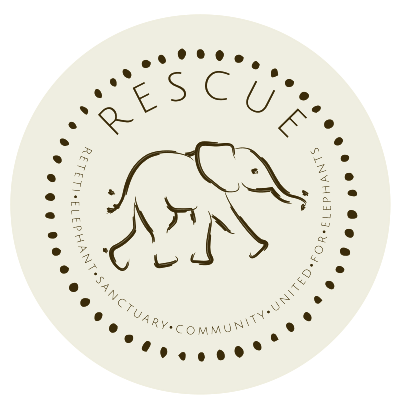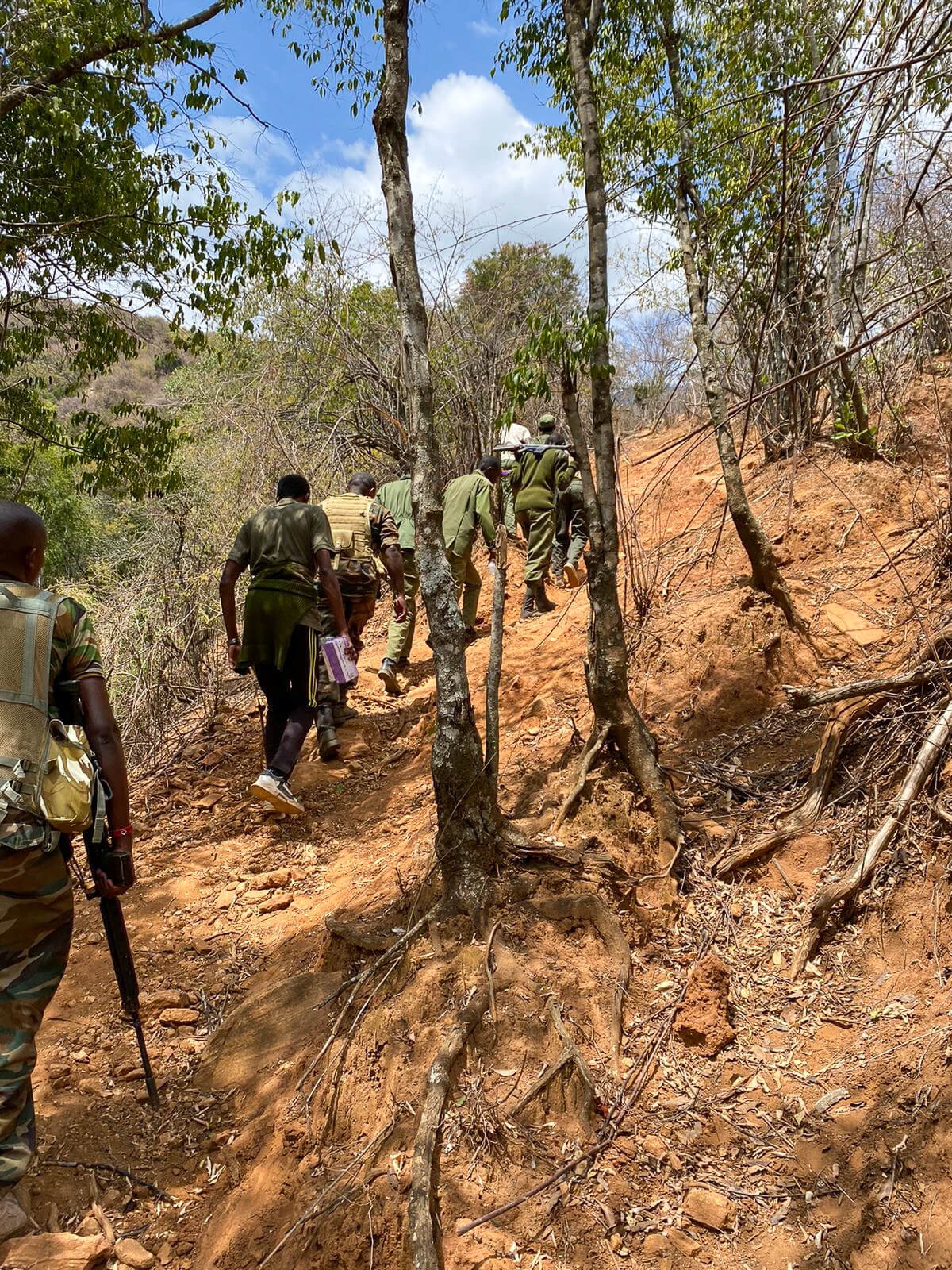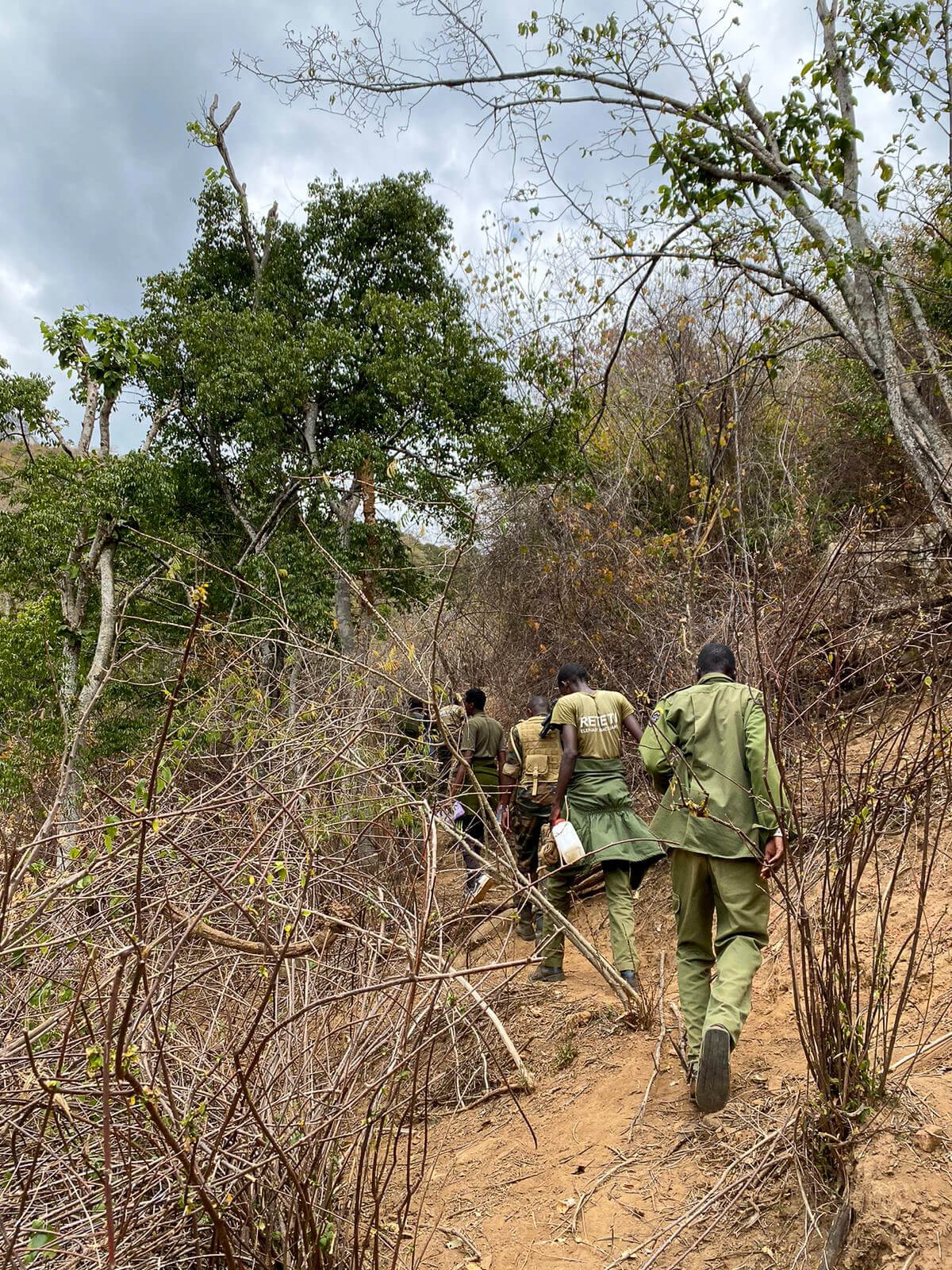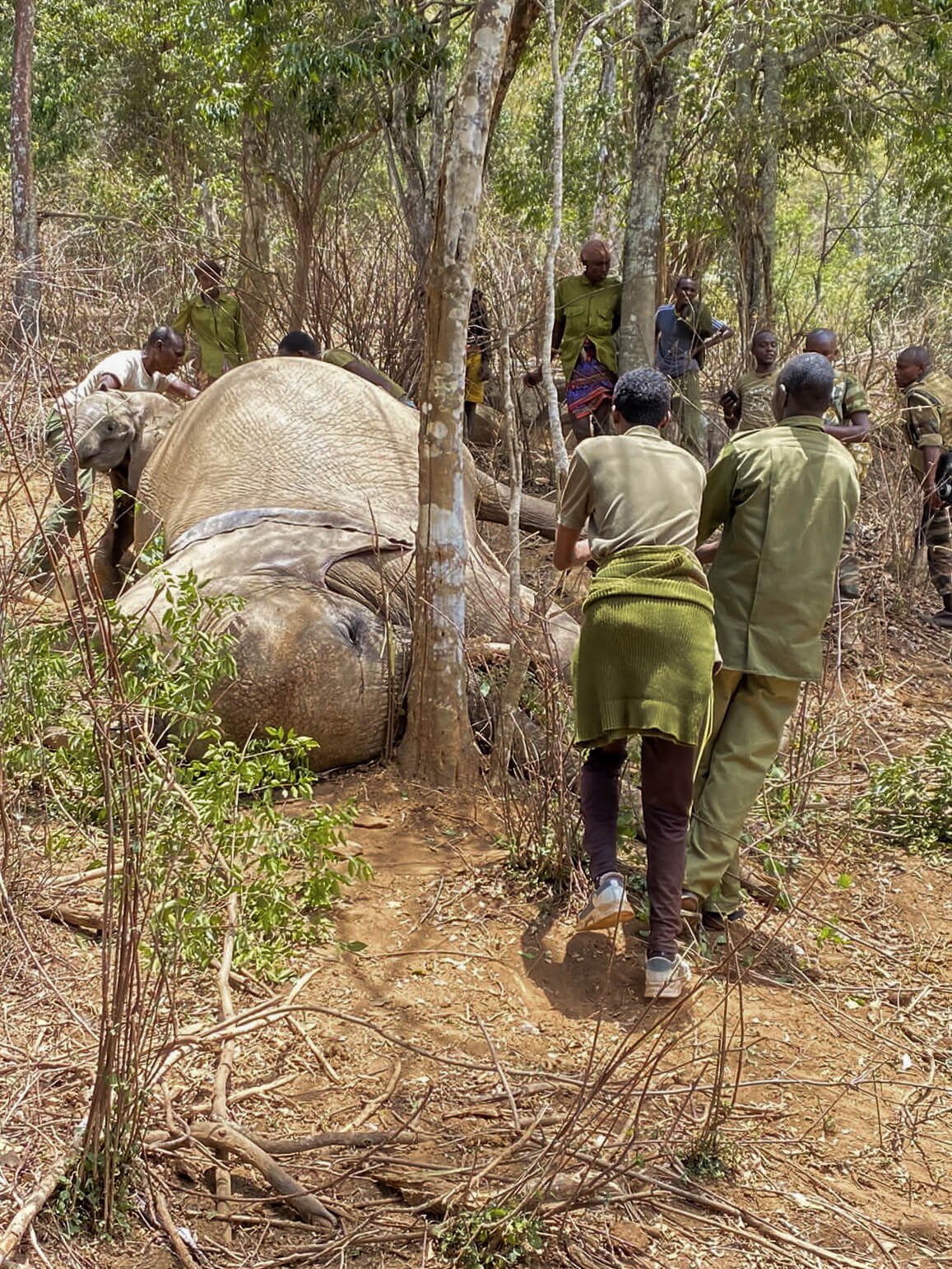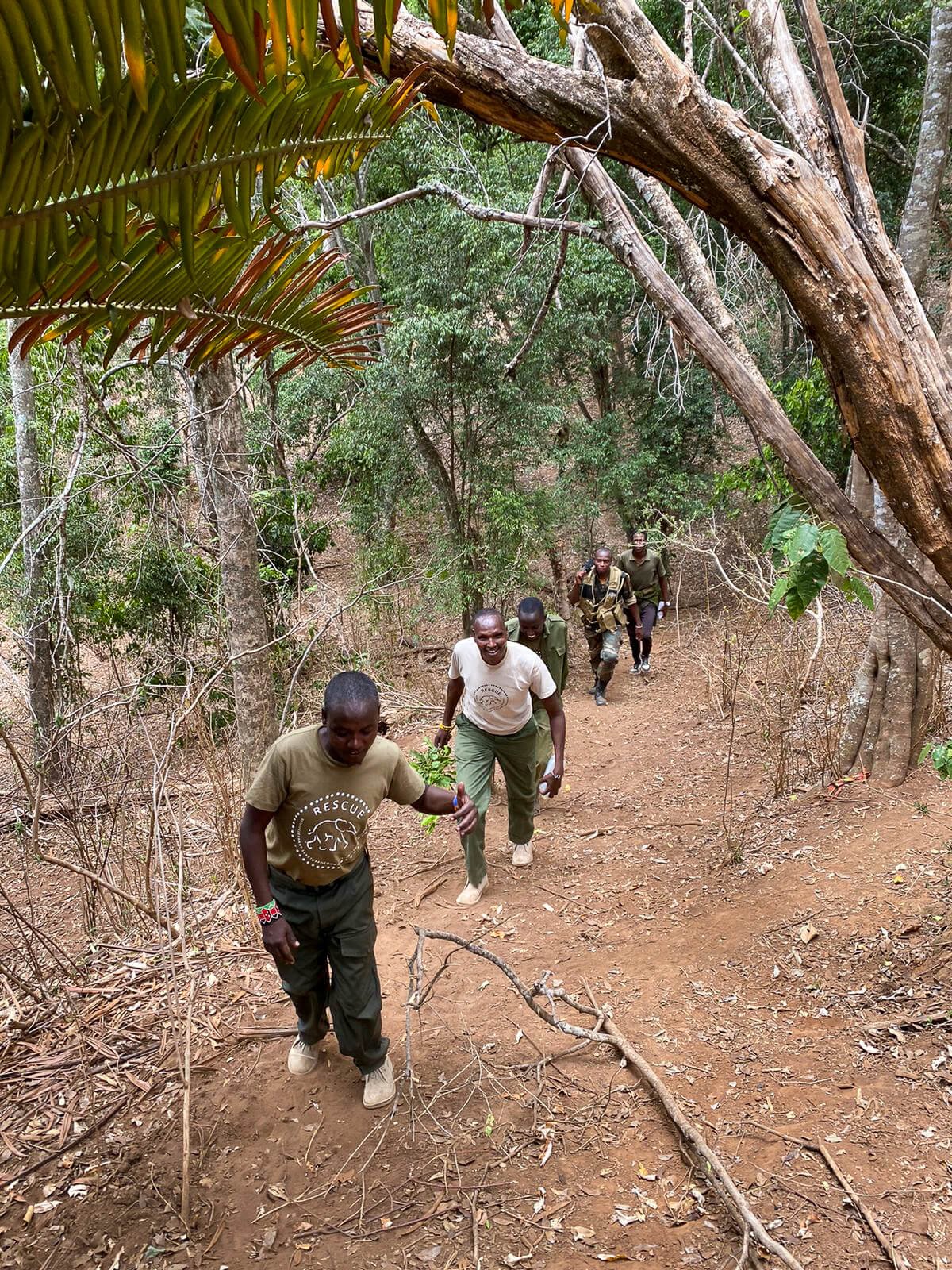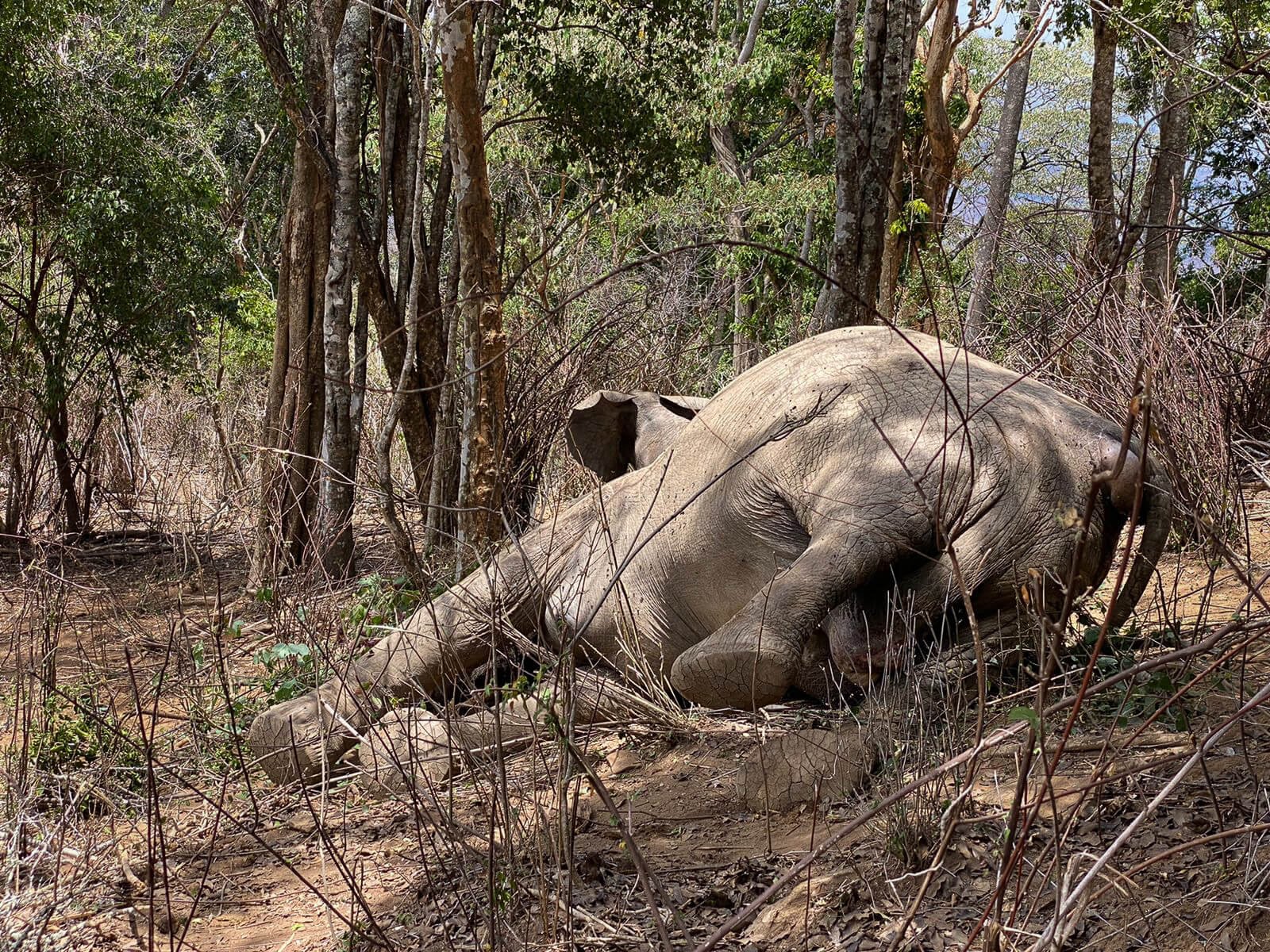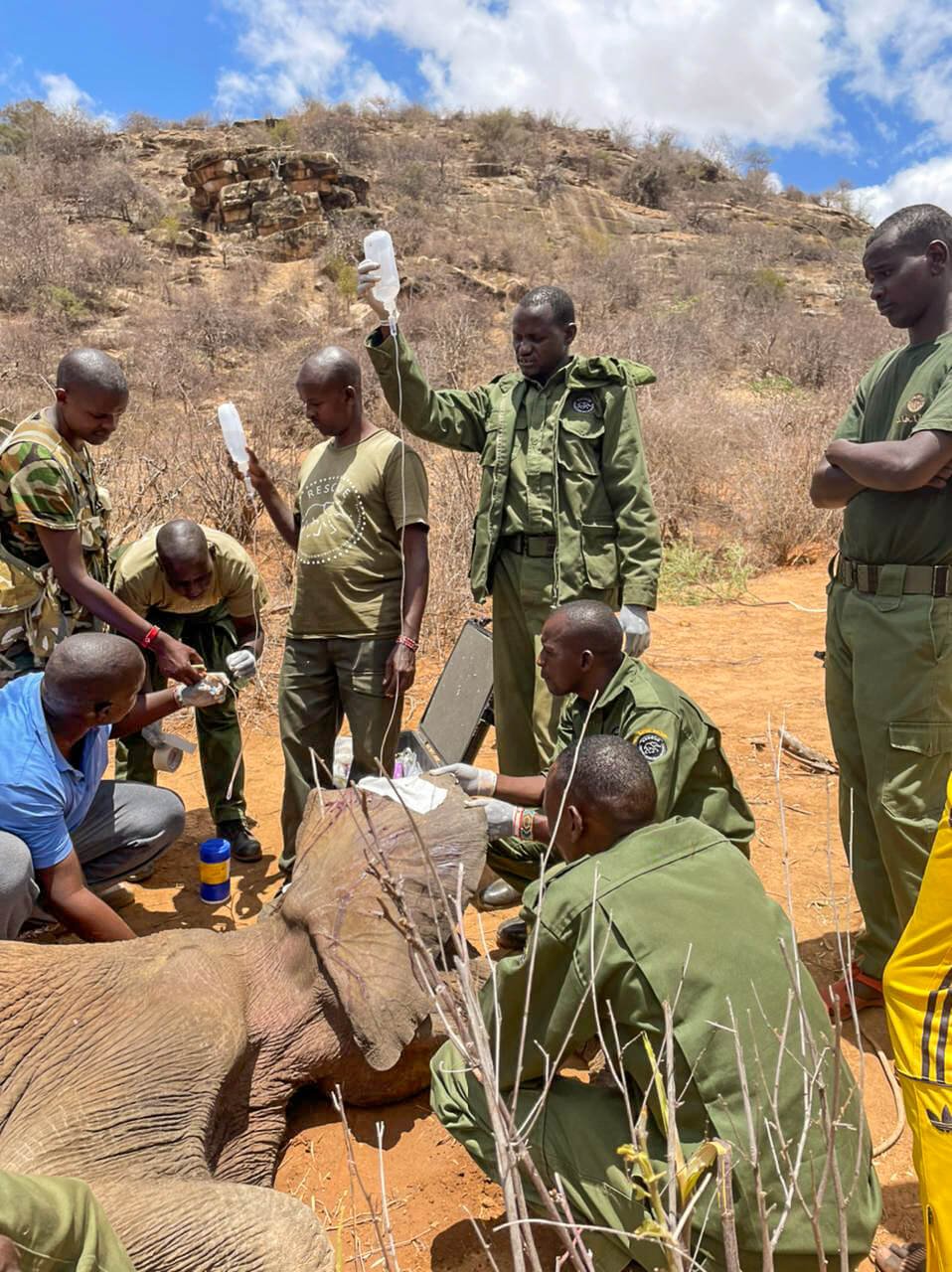Part 1: Rescuing a calf from the mountain
Sitiin receiving treatment at the bottom of the mountain
Rescuing an orphaned elephant from a mountain, so remote and unreachable by road or air, required unwavering commitment and dedication of the Reteti Rescue Team.
On the 20th of September, the sound of metal bells break the still air as local Samburu herders and their livestock move through the remote Mathews Mountains. As wildlife and people often use the same narrow game trails they came across a young elephant calf, next they saw that next to it was its mother’s deceased body. The herders knew what to do. Using their precious cell phone data, they scrambled to find signal and called the Reteti team.
Unsure of what condition the calf was in, but knowing the terrain would be challenging, we immediately deployed a large rescue team.
After three hours of hiking up steep, technical terrain, the Reteti Team reached the calf, who was still alive, incredibly dehydrated and trying to suckle from its mother’s lifeless body. Based on the condition of the calf and the carcass, it seemed that the calf had been with its mother’s body for three days or more
With the ever worsening drought, elephants have been going up into the Matthews, as that’s the only source of water and nutrition. Elephants are incredible “climbers” and well adapted to this terrain. From what we saw, we assume that the mother died as a result of the drought.
Getting the calf to safety
The terrain was too steep and too technical to carry the calf, so sedating the calf was not an option. The team had to walk the calf back down the mountain to where the Reteti vehicle was waiting. Whilst that in itself was a challenge, separating the calf from its mother’s body was not only sad, but deeply distressing for the calf and team alike. With every attempt the team made to try walk the calf away from its mother, the calf would force itself loose and run back to her side; devastated and unwilling to stand down from her guard.
The keepers managed to give her time to say good bye and gently walked her down the mountain, using their bodies to guide the calf who was now shaken-legged and low on glucose. Once they reached the vehicle, Reteti’s vet was ready and waiting. The calf was sedated and received drips to assist with dehydration and malnutrition.
First days at Reteti
Sitiin, as the baby was named, spent her first fews days at Reteti settling in. The new arrivals are closely monitored and not integrated in the herd just yet while we screen and observe them for potential illness, or infections. He was visibly traumatised and sad; understandably so. Keepers took turns to stay with her, around the clock, to ensure that he’s never alone. Allowing her time to get used to her new human family.
It’s encouraging to see her taking to the milk bottles quite quickly and that she has a good appetite. All encouraging signs that she will heal and recover from the trauma she’s experienced in her short life.
We are receiving reports of orphaned elephants in very remote areas that are unreachable by road or air. These reports come in from herders who, in the past, may not have known what to do or who to call; but feel very proud of the sanctuary today. Thanks to the momentum of the grassroots conservation movement, they now go out of their way to call for help when they find an elephant in need.
Rescues like this are only possible thanks to the generosity of a global community of supporters. Together, we can ensure that Sitiin and 40 other orphans will one day roam the plains of Northern Kenya as wild elephants.
